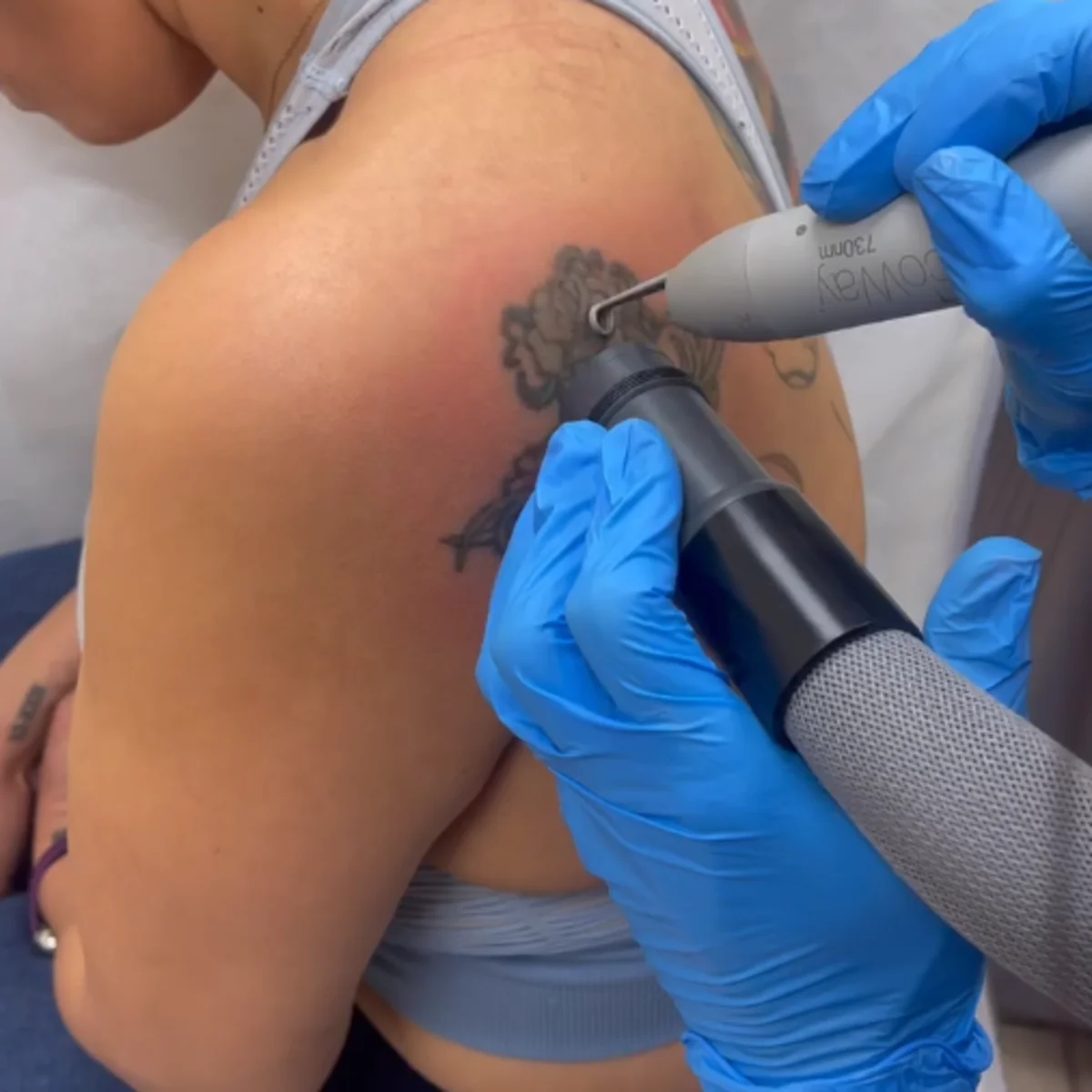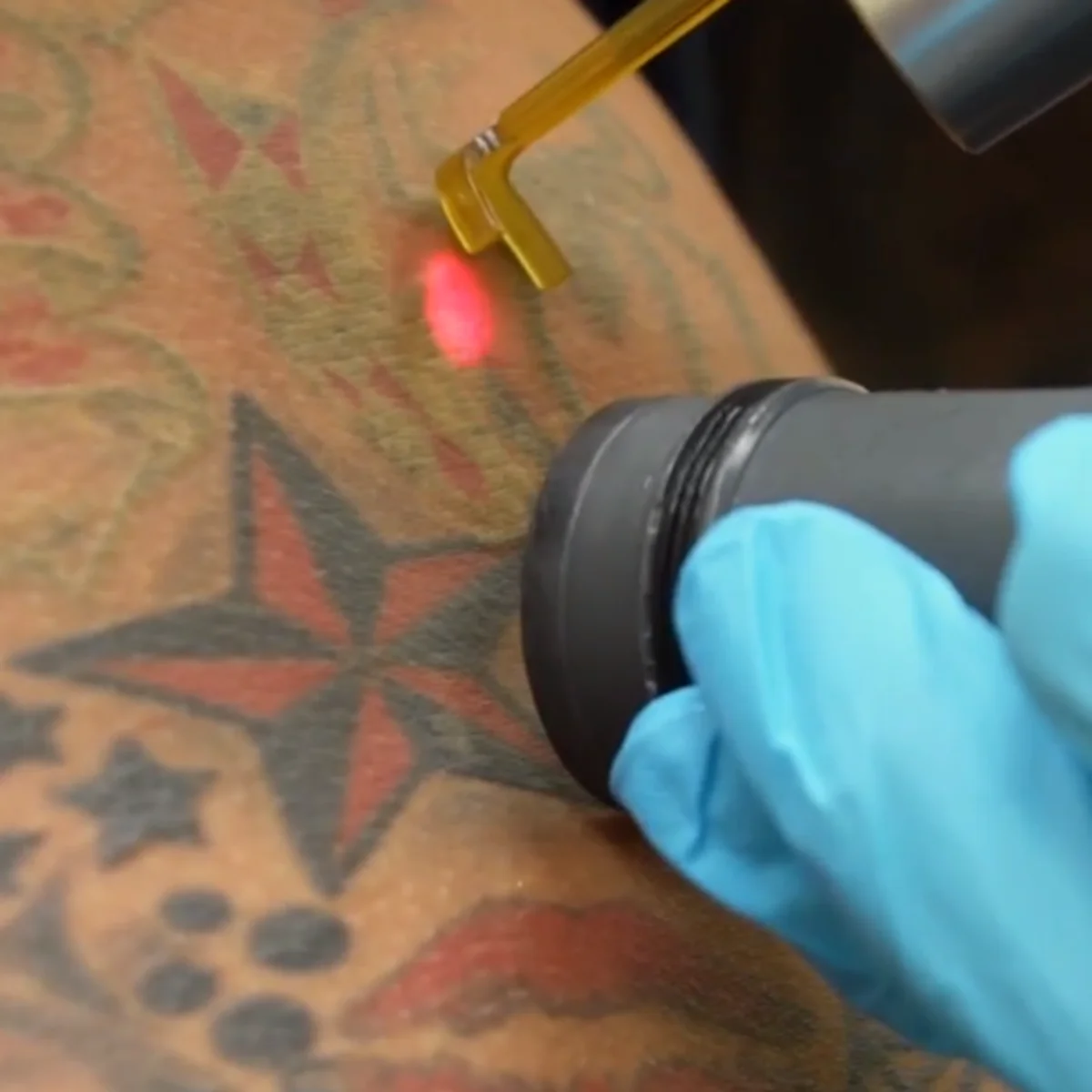If your tattoos no longer represent you, if you’ve experienced a change in circumstances, or simply dislike them, laser tattoo removal can help you eliminate them. Although tattoo removal Melbourne is a safe and effective method for removing unwanted tattoos, it’s worth noting that results can vary.

When considering laser tattoo removal treatment, it’s crucial to inquire about the following:
- The type of equipment being used and its track record for success.
- Whether the therapist is certified in laser safety.
- Whether the device can effectively remove all the necessary ink colours.
Scheduling a laser tattoo removal treatment is a reliable and effective way to say goodbye to your tattoos.
How does Laser Tattoo Removal work?
At Tattoo Removal Melbourne, we use medical-grade lasers, including the Bluecore Iris Q-switch Nd: YAG Laser (532nm/1064nm/SLP/PTP BlueToning) and the Medlite C6 Q-switched YAG Laser, to safely and effectively remove unwanted tattoos. The specific settings on these laser removal devices enable us to target most ink colours, including black, blue, green, and other lighter shades. All our therapists are laser safety certified and have undergone direct, accredited training and experience with the device.
The medical-grade lasers target the unwanted tattoo with short pulses of light that are attracted to the pigment in the tattoo, destroying the ink. Over time, the ink particles are broken down by your immune system and expelled from your body through its waste system.
What types of tattoo removal lasers do we use?
The Bluecore Iris Q-switch Nd: YAG Laser is a highly powerful and safe Q-switched laser. It operates at a True 15Hz/s pumping speed, treating pigmented lesions by safely destroying only the ink pigments. This highly efficient treatment causes minimal pain and can be completed within minutes.
The Medlite C6 Q-switched YAG Laser employs unmatched Precision Beam Technology with flat-top beam profiles. The homogeneous beam delivers laser energy evenly over the pigmented skin, producing consistent results with fewer complications.
Is Laser Tattoo Removal Suitable for You?
During your initial consultation with our highly trained and experienced therapist, they will assess your suitability for laser tattoo removal. It’s important to note that some lighter-coloured tattoos may not respond as well to this treatment as darker colours. We’ll also estimate the number of laser tattoo removal treatments needed to achieve your desired outcome.
What does Laser Tattoo Removal feel like?
At Tattoo Removal Melbourne, we ensure every patient has a comfortable laser tattoo removal experience. One hour before your treatment, our therapist will apply a topical anesthetic cream to the area. We also use a thermal cooling device that blows cold air over the skin during treatment.

What preparation is needed before a laser tattoo removal treatment?
Before undergoing laser tattoo removal, it’s crucial to avoid sun exposure for at least 4 weeks. For optimal results, maintaining a healthy lifestyle by eating nutritious food, drinking plenty of water, exercising regularly, and reducing alcohol consumption is important. Cutting down on smoking or quitting altogether is also beneficial. These preparatory steps ensure your immune system is in the best possible condition before your laser tattoo removal treatment. The healthier you are, the quicker your body can break down and absorb the ink particles.
What should I do after my laser tattoo removal treatment?
After your laser tattoo removal treatment, apply Bepanthen cream and a soothing agent like Lira Clinical repair balm to the treated area for 24-48 hours. Your artist will apply a non-stick dressing after your treatment, which should be kept in place for the first 24-48 hours unless there is no blistering or scabbing.
In the following days, it’s crucial not to pick at any crusting that may form in the area. To prevent sun damage, apply at least SPF 30+ daily to skin areas exposed to the sun. Avoid excessive sweating and heat to the treatment area by avoiding excessive exercise, saunas, spas, and hot showers. Drink plenty of water and maintain a healthy diet to aid your healing and recovery process.
